This post may contains affiliate links. Read our full disclosure here.
Think of the last time a Cabernet tasted like vinegar or a Chardonnay fell flat. Chances are, the vessel mattered as much as the vintage. Modern wine glasses aren’t just décor – they’re engineered tools that turn $15 bottles into liquid velvet.
This isn’t snobbery; it’s science. The curve of a bowl directs aromas like a GPS for your nose. A slender stem keeps fingerprints off the crystal (and your Tempranillo chilled). Even the rim’s thickness changes how flavors hit your tongue – thin edges let wine flow like a Spotify playlist, while thick rims? They’re the audio equivalent of dial-up.
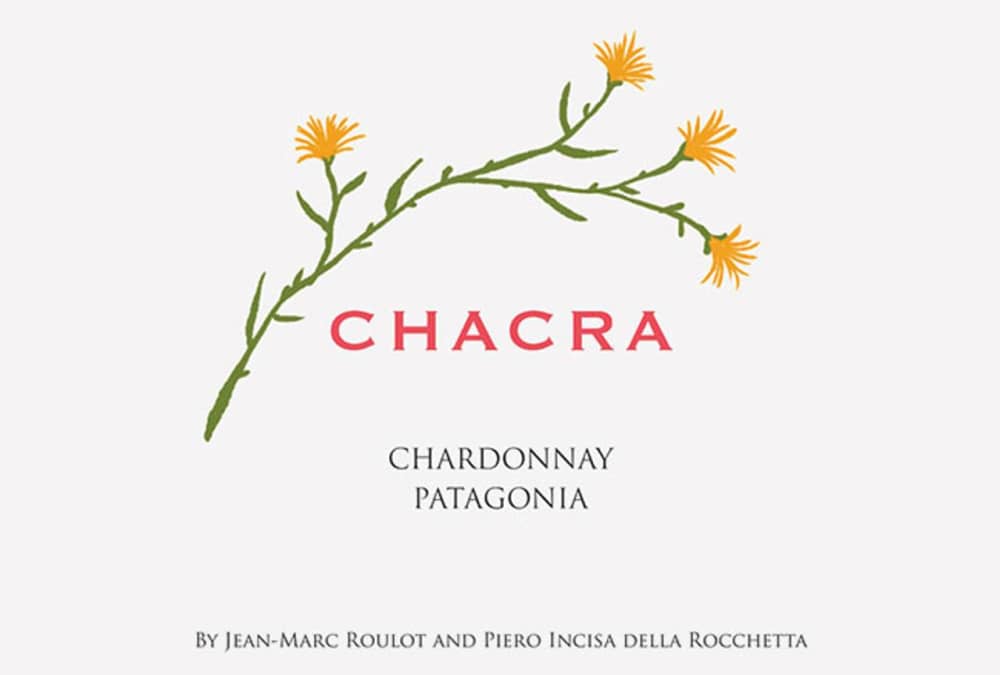
From Bordeaux goblets to flute glasses that make Prosecco pop, every design serves a purpose. Red drinkers need wide bowls for swirling bold tannins. White wine lovers? They’re all about narrow openings that concentrate crisp citrus notes. And don’t get us started on dessert wines – those tiny tulip-shaped glasses aren’t just cute, they’re aroma grenades.
Consider this your backstage pass to the secret world of stemware. We’re breaking down how shape impacts taste, why Zalto’s designs are the Tesla of glassware, and when to break “the rules” (spoiler: rosé in a rocks glass isn’t always a crime). Your next Netflix-and-cab night just got an upgrade.
Understanding the Role of Glass Shape in Wine Experience
Like a perfectly tailored suit or runway-ready stilettos, glass shape isn’t just aesthetics—it’s liquid engineering. That first sniff of black cherry in your Merlot? Thank the bowl’s curve. The way citrus zings across your tongue in a Sauvignon Blanc? Credit the rim’s razor edge.
Oxygen’s Red Carpet Moment
Wide bowls act like mini oxygen bars for bold reds. Swirling Cabernet in a Bordeaux glass isn’t performative—it’s chemistry. Surface area matters: 15% more oxygen exposure softens tannins better than decanting. Narrow rims then funnel those mellowed flavors straight to your palate’s sweet spot.
Flavor Architecture 101
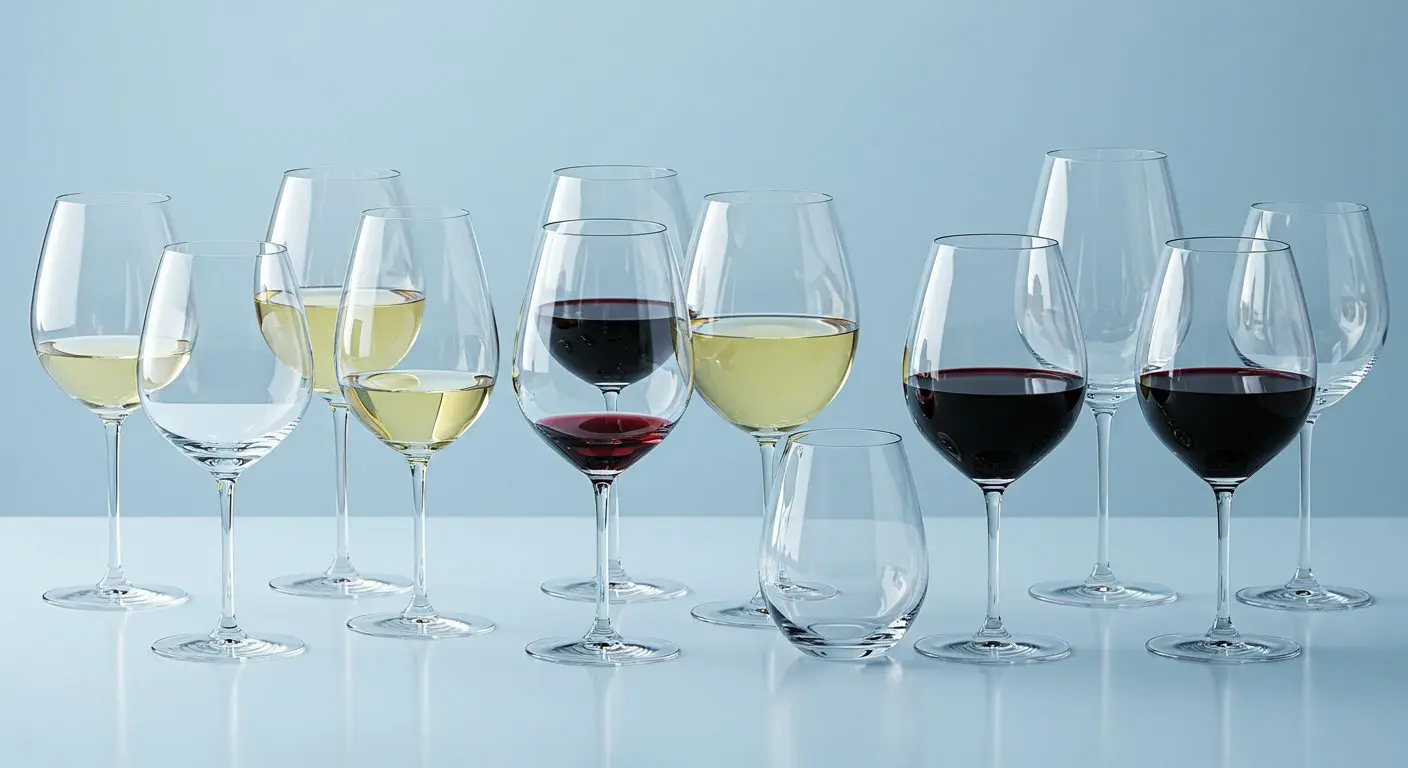
Ever notice how cheap Chardonnay tastes sharper in water glasses? It’s not imagination. Scientific studies show:
- Thin rims let wine glide like satin
- Stem height keeps white wines 4°F cooler
- Curved lips direct aromas into nasal GPS coordinates
Take Zalto’s Universal glass—its tilted bowl angles flavors toward bitterness receptors, making even grocery-store Pinot Noir taste complex. Meanwhile, Riedel’s Burgundy design turns light-bodied reds into layered symphonies by delaying the wine’s palate landing.
Your move, stemless tumblers.
Different Types of Wine Glasses and How They Enhance the Experience
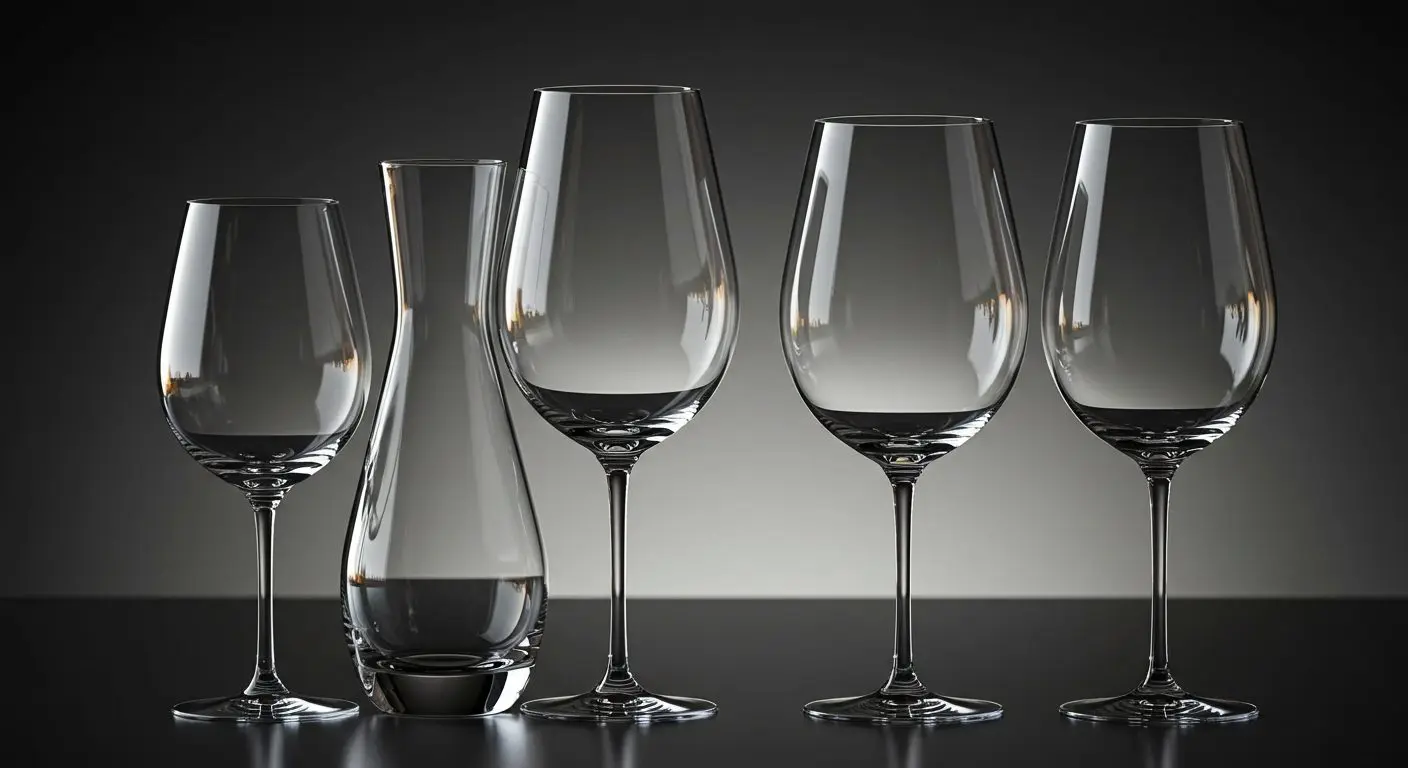
Imagine your Malbec moonlighting as mouthwash—blame the glass, not the grape. Modern stemware acts like flavor amplifiers, turning subtle notes into solos. From bold Bordeaux blends to whisper-light Pinots, each design plays chemist with your drink.
Red Wine Revolution
The Bordeaux glass towers like a skyscraper, its broad bowl swirling oxygen into Cabernet like James Bond shaking martinis. Burgundy’s wider cup lets delicate Pinot Noir aromas bloom like TikTok trends—slowly, then all at once. “It’s about directing tannins away from bitter receptors,” explains Napa Valley sommelier Lela Riga.
Compare them:
- Bordeaux: Tall frame softens bold reds
- Burgundy: Wide mouth highlights earthy notes
- Pinot Noir: Curved lip pushes flavors forward
White Wine Wizardry
White wine glasses work like refrigerators for your Riesling. The Sauvignon Blanc model’s narrow shape keeps citrus zing locked in—think of it as Spanx for aromas. Chardonnay’s tulip bowl? That’s the IMAX screen for buttery oak flavors.
Riedel’s experiments prove it: pour the same white wine into different vessels, and testers describe three distinct drinks. Your stemware isn’t just holding liquid—it’s rewriting the recipe.
Exploring Sparkling and Dessert Wine Glass Styles
Champagne flutes aren’t just for Instagram clinks – they’re precision tools turning bubbles into liquid fireworks. Whether you’re popping Veuve or sipping late-harvest Sauternes, these vessels rewrite the rules of taste.
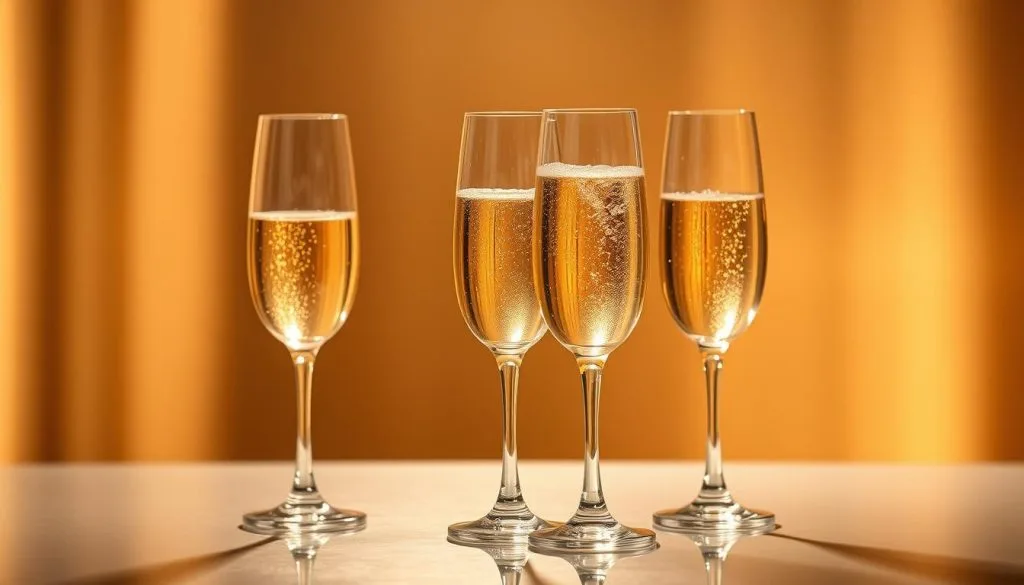
Sparkling Wine: Flute, Coupe, and Tulip Glass Characteristics
The flute’s narrow build isn’t a fashion statement – it’s bubble science. Its tall frame traps carbonation like a Tesla’s aerodynamics, while the slim mouth directs apple-and-toast flavors straight to your olfactory HQ. But don’t sleep on the coupe – its disco-era comeback isn’t just retro chic. The wide bowl lets Prosecco’s aromas bloom faster than a TikTok dance trend.
| Glass Type | Best For | Key Feature | Effect |
|---|---|---|---|
| Flute | Brut styles | Height preserves bubbles | Intensifies crispness |
| Coupe | Cocktail blends | Shallow design | Accelerates aroma release |
| Tulip | Aged sparklings | Tapered rim | Balances bubbles & complexity |
Dessert Wine Glasses: Port and Sherry Designs for Enhanced Sweetness
Dessert wine glasses work like flavor magnifiers. Their petite size isn’t about portion control – it’s a strategic strike. Riedel’s Sauternes glass angles honeyed notes toward sweetness receptors, while designs for Port use flared lips to soften alcohol heat. “It’s about creating flavor GPS,” says Master Sommelier Emily Wines. “One wrong turn, and you’re in cloying syrup territory.”
Spiegelau’s cordial glasses prove the point: their crystal-thin rims make sticky Tokaji taste laser-focused, not diabetic-coma sweet. Whether you’re pouring sherry or ice wine, these aren’t glasses – they’re flavor conductors.
Selecting Glasses for Rosé and Versatile Wine Enjoyment
Rosé isn’t just a drink—it’s a summer state of mind. But that Insta-worthy pink elixir can taste like flat Sprite if poured into the wrong vessel. The right glass turns strawberry notes into fireworks and minerality into a mic drop.
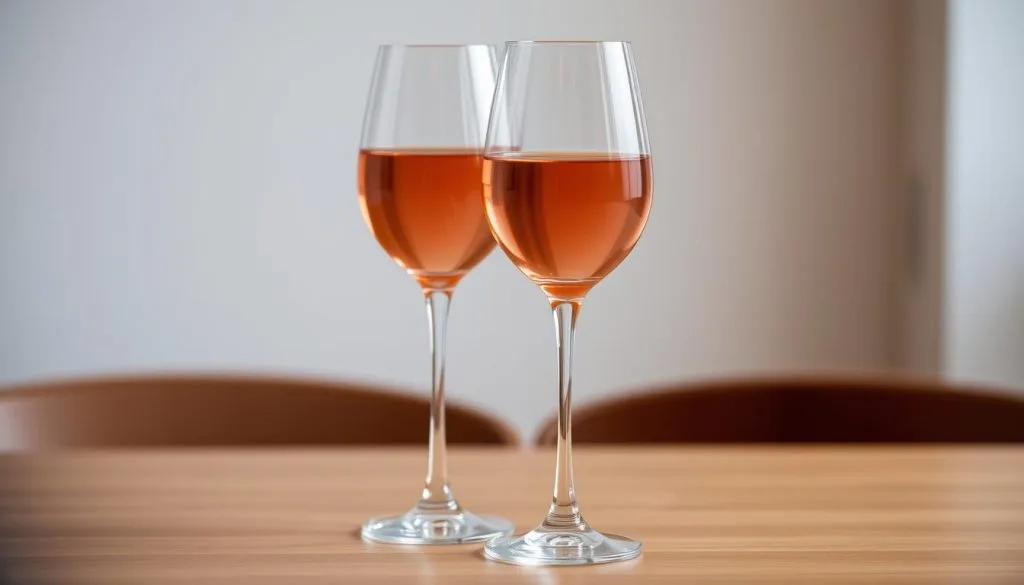
Lip Service: Flared vs Tapered
Young, crisp rosés need glasses with flared lips—think of them as megaphones for citrus aromas. Studies show these designs increase volatile compound release by 23%, making Provence-style bottles taste 2X fresher. Mature rosés? They thrive in slightly tapered glasses that focus baked peach flavors like a spotlight.
| Style | Glass Shape | Best For | Effect |
|---|---|---|---|
| Young Rosé | Flared lip | Provence, Txakoli | Amplifies crispness |
| Aged Rosé | Tapered rim | Bandol, Tavel | Concentrates complexity |
Stem Game Strong
Stemmed glasses aren’t just for fussy sommeliers. That elegant stem keeps your grubby fingerprints off the bowl, maintaining the wine’s chill like a VIP fridge. But let’s be real—stemless options are the skinny jeans of wineware. They’re dishwasher-safe, tip-resistant, and perfect for Netflix marathons.
Want the ultimate hack? Universal glasses designed for multiple types of wine let you sip Cabernet at noon and rosé at dusk without cabinet clutter. As Master Sommelier Victoria James says: “Your glass should disappear—until the wine makes it sing.”
Whether you’re Team Stem or a stemless rebel, remember: great wine experiences start with intentional sips. Now go forth and rosé all day.
Understanding the Anatomy of a Wine Glass
Your go-to wine glass operates like a Formula 1 car – every curve engineered for peak performance. Forget decoration; this is liquid choreography. Four elements transform grape juice into poetry: base, stem, bowl, and rim. Each plays defense attorney for flavor, protecting your Pinot from mediocrity.
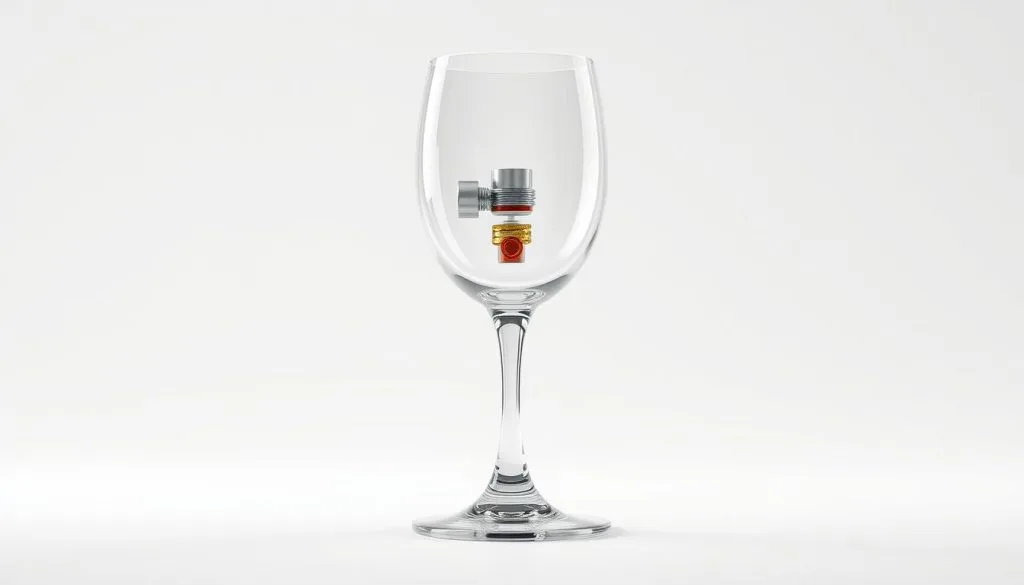
Key Components: Base, Stem, Bowl, and Rim Explained
The base isn’t just a pedestal – it’s the foundation preventing your $80 Barolo from becoming a carpet stain. Wide enough for swirling theatrics, sturdy enough for tipsy toasts. Flip it upside down? That’s how pros store crystal to avoid dust tragedies.
Meet the stem – your wine’s climate control system. Holding it prevents heat transfer better than a Yeti cooler. Bonus: no fingerprint smudges ruining your #WineWednesday aesthetic. Swirl freely; the stem’s your wrist’s dance partner.
The bowl is where magic happens. Red wine models need runway-wide curves for oxygen exposure – think Cabernet doing jazz hands. Whites prefer narrow profiles, locking in citrus zing like a vault. Science says bowl shape boosts aroma detection by 40% – your nose’s personal sommelier.
That razor-thin rim? It’s not fragile – it’s strategic. Thinner than a TikTok attention span, it directs wine flow like a flavor GPS. Thick rums clobber subtleties; precision edges let notes pirouette across your tongue.
“This isn’t glassware – it’s liquid architecture,” says Riedel’s CEO. Centuries of refinement birthed designs balancing physics and artistry. Your glass isn’t just holding wine – it’s conducting a symphony where every sip’s a standing ovation.
Comparing Crystal and Glass: Enhancing Your Wine Experience
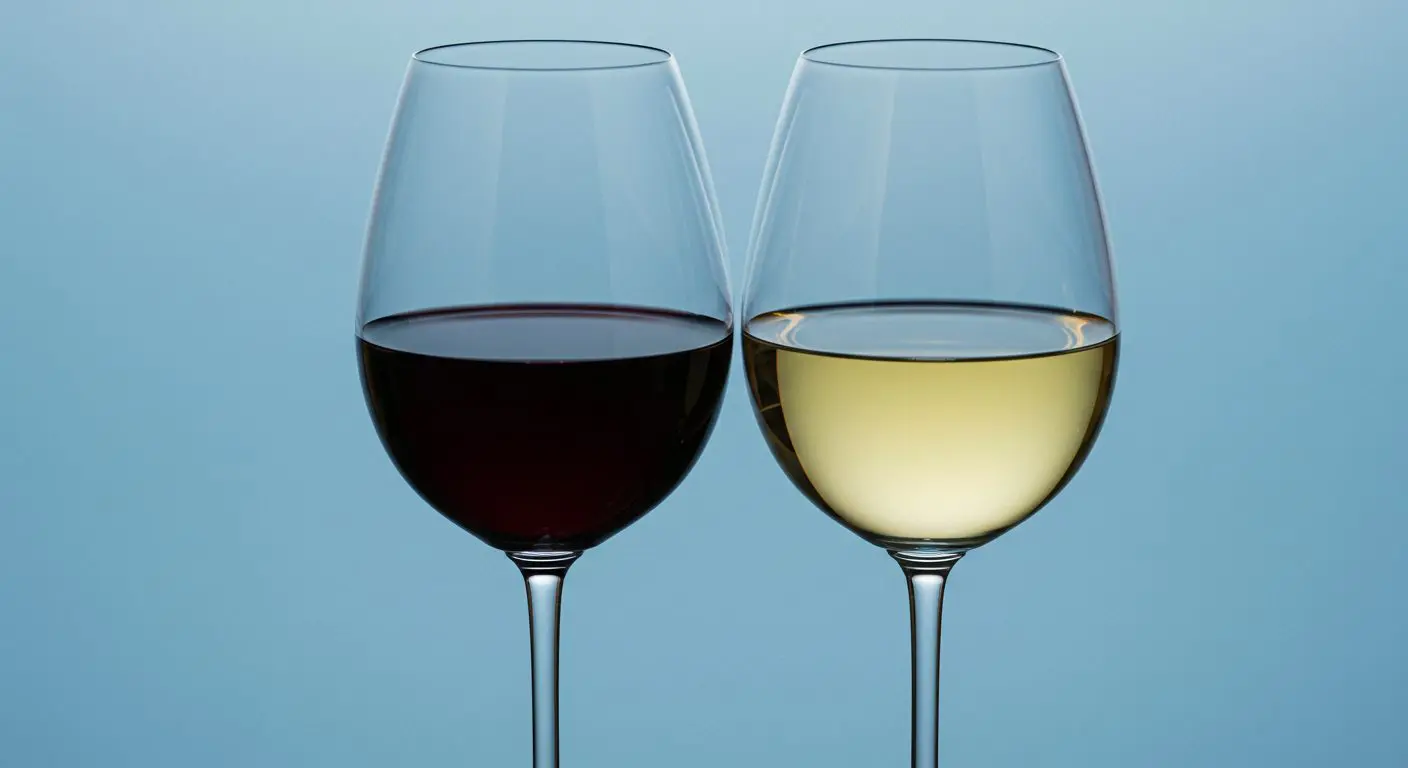
Crystal versus glass is the MacBook vs. Chromebook debate of stemware. One whispers luxury, the other shouts practicality. Your Cabernet Sauvignon doesn’t care about status symbols—it just wants the best runway for its tannins and aromas.
Silk Sheets for Your Syrah
Crystal’s rim is thinner than a celebrity marriage—razor-edged to let wine glide across the tongue like a Tesla on autopilot. Its lead content (up to 32% in premium brands) refracts light like disco balls, making burgundy glasses look like liquid art. “It’s not just about taste—it’s about elevating the entire wine experience,” says Riedel’s CEO.
- Pros: Enhances aromas by 19% (University of Bordeaux study)
- Cons: Hand-wash only, $50+ per glass
Jeans-and-Tee Reliability
Glass is the Honda Accord of drinkware—unpretentious and dishwasher-safe. Borosilicate models survive frat parties and clumsy brunch guests while keeping red wine at optimal sipping temps. The thicker rim? Think of it as training wheels for novice wine enthusiasts.
| Feature | Crystal | Glass |
|---|---|---|
| Weight | Featherlight | Substantial |
| Durability | Handle like Ming vases | Survives bar carts |
| Cost | $$$ | $ |
Use crystal when your Cabernet Sauvignon deserves a red carpet moment. Reach for glass when Netflix-and-chill nights demand indestructible stemware. Because sometimes, the design should complement the occasion—not outshine it.
Pick The Perfect Wine Glasses For Your Style
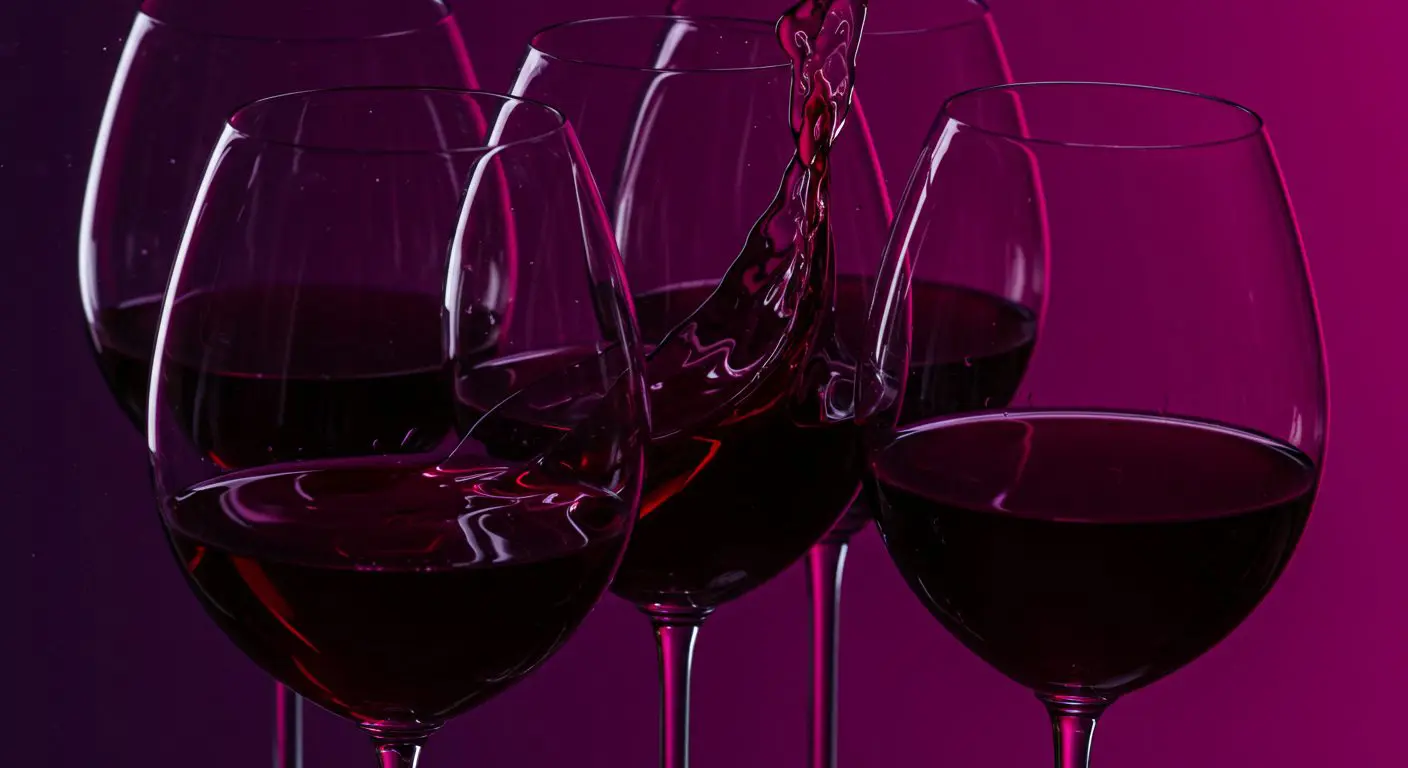
Your final sip deserves better than a coffee mug. Specialized wine glasses aren’t pretentious—they’re flavor translators. From Bordeaux bowls oxygenating bold reds to flutes preserving Prosecco’s fizz, every curve serves science. That tulip-shaped glass for Riesling? It’s a citrus spotlight. The coupe’s wide mouth? A speed dial for aroma explosions.
Material matters: crystal’s razor-thin rim slicks wine across the tongue like satin sheets, while durable glass survives Sunday brunch chaos. Whether swirling red wines in Burgundy goblets or chilling white wines in slender stems, your vessel is the DJ remixing each note.
Treat your Cabernet to a tailored experience. Test Riedel’s precision against Zalto’s gravity-defying design. Host a tasting comparing Sauvignon Blanc in tumblers versus tulip glasses—prepare for plot twists.
Modern wine culture thrives where STEM meets stemware. Your next pour isn’t just a drink—it’s a front-row seat to chemistry’s greatest hits. Upgrade your arsenal. The difference isn’t subtle; it’s liquid evolution.




